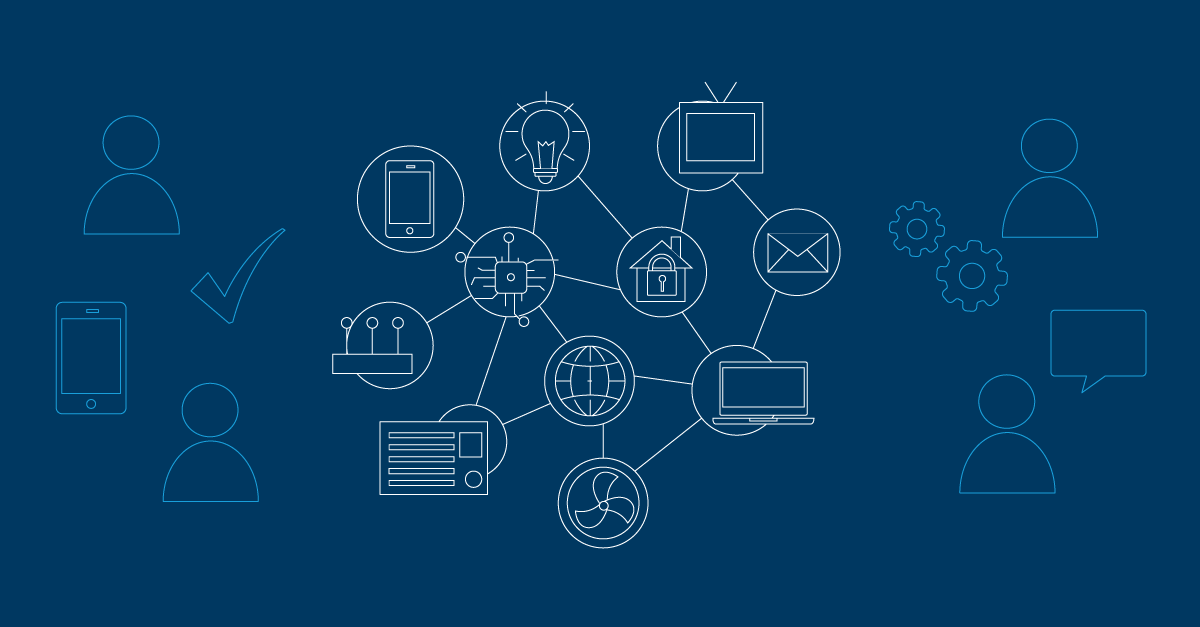What Is Business Intelligence and
How is it Used?
Time to read: 6 minutes
Business intelligence (BI) is defined as using data to inform business decisions. These decisions include improving processes, correcting inefficiencies, adapting to industry changes, and determining company priorities.
The term also refers to all the processes that manage said data. These processes include data mining, performance benchmarking, querying, and descriptive analytics.
In this business intelligence overview, learn BI tasks, benefits, real-world examples, and more.
See how to unite sales, service, marketing and
deliver success now with Salesforce Customer 360
Table of Contents
- What is business intelligence software?
- What are the five basic tasks of business intelligence?
- How is business intelligence used?
- Why is business intelligence important today?
- How to put business intelligence solutions in place?
- How do AI and business intelligence relate?
- The difference between business analytics and business intelligence
- Business Intelligence FAQs
What is business intelligence software?
Business intelligence software and tools collect data and prepare it for analysis. Beyond this simple definition, they can be quite varied. Some business intelligence analytics software is for large companies. There’s also business intelligence for small businesses.
The top business intelligence software tools provide a wide range of services. There are different applications for business intelligence data collection, data management, and reporting. Some also do all three.
Cloud business intelligence tools are one option. These are hosted on a virtual network (i.e., the internet). Business intelligence in the cloud can be cost-effective, growable, and reliable, all of which have increased these tools' popularity.
What are the five basic tasks of business intelligence?
The process of business intelligence breaks down into five main tasks.
Data collection: The software gathers business intelligence data from various sources, and then it’s stored in a data warehouse.
Data set creation: Before the data is analysed, the business intelligence team creates data sets in preparation.
Data analysis: The data is reviewed to identify patterns, inconsistencies, and notable data points.
Data sharing: The data and findings are displayed in charts, graphs, dashboards etc. These are shared with key business stakeholders.
Decision making: Based on the data, decision-makers determine the next steps and enact change.
Before this process begins, it’s important for a business to understand its goals and what it hopes to learn. This will help ensure the correct data is collected and analysed. It’s also useful for a company to determine specific questions they want to answer with business intelligence.
What questions does business intelligence answer?
Business intelligence solutions can answer many different questions. Some of the most common questions businesses look to answer are:
What are our best products?
Who are our best customers?
Where do our customers come from?
When should we engage with customers?
How can we retain customers?
Where are there inefficiencies in our processes?
How sticky is our website?
How is business intelligence used?
Business intelligence software tools and the data they gather can help make many business improvements. For one, companies can replace manual reporting with an automated system. This can make reporting easier and more accurate. It can also improve data quality.
Different types of businesses use business intelligence solutions in different ways. Retail companies can use business intelligence to identify fraud and fix issues with the supply chain. School systems can benefit from BI as well. They can use it to look at attendance rates and improve student learning.
Why is business intelligence important today?
Business intelligence helps companies make better choices for the business. Without business intelligence data, companies may make uninformed, worse decisions.
The value of business intelligence is greater today than in the past. Its benefits have only increased as advances in technology have been made. BI, as it’s known today, started developing in the 1980s when computer usage became more widespread.
Over time, limitations have been resolved. Today, BI can manage large data sets, easily share data, and combine many data sources. The amount of business intelligence software available has also increased.
Why do you need business intelligence?
There are many benefits of business intelligence. Some of them include the ability to:
Track performance
Identify problems
Understand customer behaviour
Recognise market trends
Find opportunities to increase sales
Look at competitor data
These benefits can lead to increased sales, lower costs, and improved employee and customer satisfaction.
What are the types of business intelligence decisions?
Business intelligence solutions can help inform three types of decisions: strategic, tactical, and operational.
Strategic: These are major choices that affect a significant part of the business — if not the business as a whole. They’re typically made by those on the executive level somewhat infrequently.
Tactical: Tactical decisions are less complex and often relate to implementing strategic decisions. They’re made regularly, on a weekly or monthly basis, and determined by mid-level managers.
Operational: Simple day-to-day decisions are considered operational. Junior managers make these decisions. While they’re considered to have less of an effect on the business, they can affect profitability and customer retention.
How to put business intelligence solutions in place?
To reap the benefits of business intelligence, it must be set up correctly. This process requires five key steps.
Create a business intelligence strategy. Before you dive in, some planning is necessary. You must understand your business’s goals and objectives and imagine what your business intelligence system should look like.
Pick a business intelligence team. Who will work on your business intelligence plan? Choose the right people to involve and make sure everyone knows their role.
Hone in on specific KPIs. Based on your goals, determine specific KPIs you’ll track. Focusing on a few can prevent you from becoming overwhelmed by the amount of data you’ll have access to.
Choose the right business intelligence software and tools. You’ll need to select a software provider and choose which business intelligence tools to use.
Start small, then expand. Begin using your business intelligence software to collect and help you analyse data on your chosen KPIs. Throughout this process, allow team members to provide feedback and assess what is and isn’t working. As the process starts to run smoothly, you can consider expanding your implementation and looking at more KPIs.
With business intelligence in a cloud-based system, setup is easy. Cloud BI takes less time and money to put in place. There’s no extra hardware needed and maintenance isn’t a concern. It’s also simple to add more features as the company’s needs expand.
How do AI and business intelligence relate?
Artificial intelligence (AI) and business intelligence are not always used together. But AI can complement BI. AI-powered business intelligence tools can expand the scope of BI by simplifying processes and reducing any manual aspects. For instance, some prepare data for analysis and provide predictive business intelligence insights.
Tableau, Salesforce’s business intelligence CRM, uses AI. It helps businesses make sense of their data with understandable AI models. Questions it can help answer include: what happened, why it happened, what will happen, and what to do about it. Other Tableau features include the ability to connect quickly and work on any device.
The difference between business analytics and business intelligence
Business analytics is sometimes called business intelligence, and vice versa — but they are not the same. That said, they do use the same data, and there’s quite a bit of overlap between the two. The differences come down to why they’re used.
Business intelligence focuses on helping companies understand what is happening right now and why. This includes the number of sales, what products or services are selling the best, etc. It can also show what has happened in the past. Companies can use this information to act on current situations.
Business analytics aims to help companies determine what’s coming next. How will their customers behave in the future? What will the business look like? Answers to questions like these (and others regarding the future) can help companies strategise for what’s next.
Business intelligence uses mainly descriptive analytics, while business analytics uses predictive analytics.
Here’s what you should take away from this article:
What is business intelligence (BI)? With business intelligence, companies collect and use data to inform decisions for the expansion and success of the business. There are many business intelligence analytics software applications and tools that gather and report on the data.
What are the basic tasks of business intelligence? Business intelligence basics consist of five main tasks. The first is collecting data from different sources. Then data sets are created. From there, the business intelligence team analyses the data. Next, the data is shared within the company using visuals like charts and graphs. Finally, decision-makers take over and determine how the findings will inform decisions.
What are examples of how business intelligence is used? Business intelligence usage examples include switching to an automated reporting process, identifying fraud, and improving the supply chain.
How can you set up business intelligence? Implementing business intelligence starts with creating a strategy and identifying goals. Then, you must assemble a team to work on BI. This team will select specific KPIs to look at and choose the best business intelligence software tools for your company. You will start using the software and adjust the process as needed. Over time, you can expand to look at more KPIs.
How are AI and business intelligence connected? AI can take business intelligence further. Artificial intelligence-powered BI tools can make data analysis less manual and provide predictive insights.
What is the difference between business analytics and business intelligence? Business analytics and intelligence are similar but not the same. While they look at the same data, business intelligence is used to understand what is happening right now and what has already occurred. Business analytics uses the data to show what will happen in the future.
Can your business benefit from business intelligence? Business intelligence has many benefits it can offer your business. It can help you make more informed, better decisions. And these decisions can improve sales and lower costs. Business intelligence also makes tracking, analysing, and sharing data simpler. You can quickly identify problems, understand customers, and recognise market trends.
See how to unite sales, service, marketing and
deliver success now with Salesforce Customer 360
What are some small business marketing strategies and trends?
What is business intelligence in simple terms?
At its simplest, business intelligence is the process of collecting, storing, and analysing data to support informed business decisions. The focus is on understanding past and present data to improve current situations. Business analytics, which it’s often compared to, is geared towards strategising for the future.
What are the benefits of business intelligence?
How is business intelligence used in the real world?

What is the Internet of Things (IoT)?




